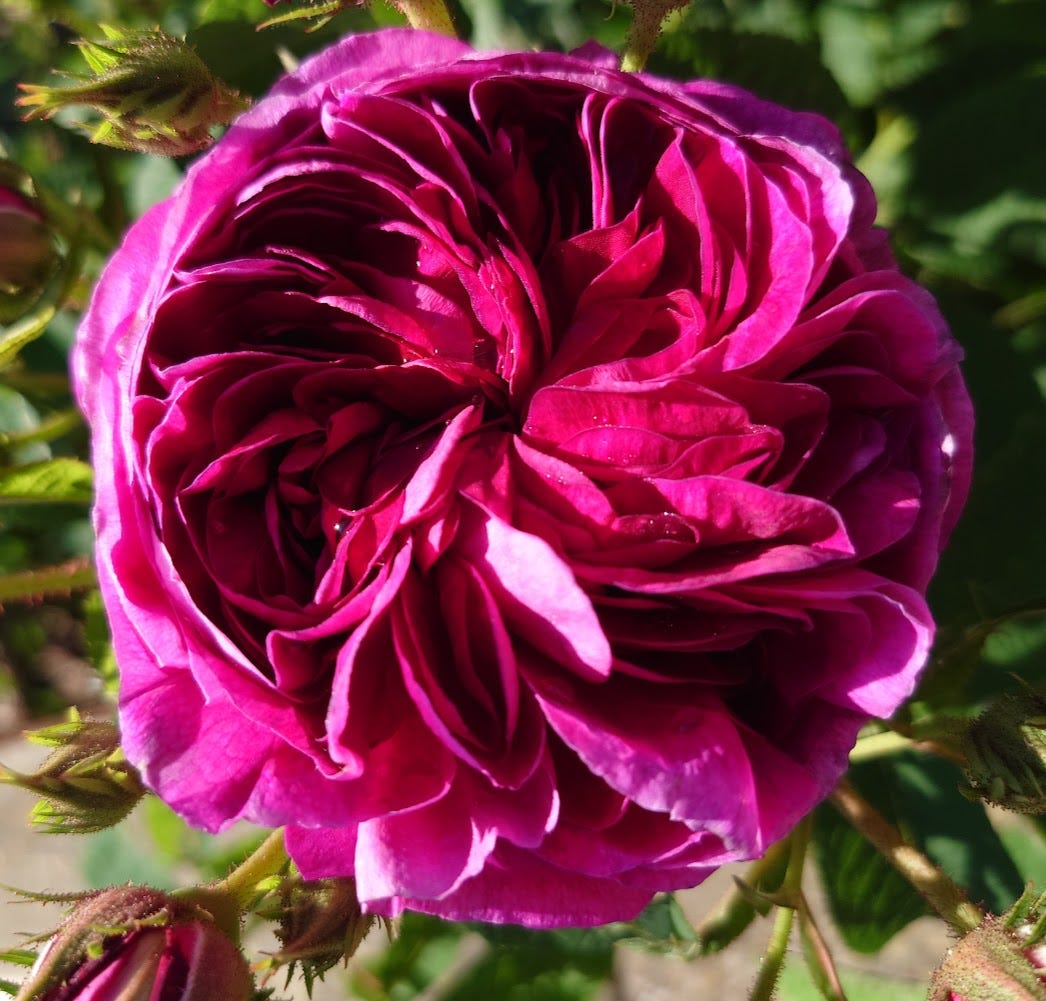Roses and a changing climate
Resilience 4 Roses, climate change, pests & disease, treating black spot and the role of the phyllosphere
🌱 I'm Sally Morgan, an organic gardener and botanist who loves to experiment. Here you can read about matters relating to climate change, sustainability, organic gardening and growing veg, helping you to become a climate savvy gardener 🌱☀️🌧️❄️🌡️
The focus this month is on roses. In my latest weekly newsletter, I explored the environmental impact of the cut rose trade, but here, I want to think about our garden roses🌹 and how they may be affected by climate change in the coming decades.
I’ll also take a closer look at black spot, one of the most common and troublesome diseases roses face, and how changing weather patterns might influence its spread.
A rich history
The rose is one of the most beloved and iconic flowers in the world, with a rich history deeply intertwined with human culture and civilization. Its history spans millions of years, with fossil evidence dating back 35 million years. Originating as wild species across the Northern Hemisphere (with simple flowers of 5 petals), roses were first cultivated in China around 5,000 years ago and later in the Middle East, where they symbolized beauty and love. Ancient Egyptians used roses in rituals, while Romans associated them with luxury and adorned public and private spaces with their flowers.
During the Medieval period, roses were cultivated in European monasteries for medicinal and symbolic purposes, while the Wars of the Roses in England highlighted their political symbolism.
Fast forward to the 18TH century, when the introduction of repeat blooming roses in Europe from China revolutionized their cultivation and led to modern hybrid varieties.
So how adaptable are they?
Today, roses are grown in gardens worldwide with an estimated 40,000 cultivars, some hundreds of years old, others recently bred. They have descended from numerous species so genetically, they are hugely diverse. They even vary in their chromosome number. Species roses can be diploid (14 chromosomes), tetraploid (28 chromosomes) or even hexaploid (56 chromosomes), depending on the variety. Most modern hybrid roses, such as hybrid teas and floribundas are tetraploid, which gives them greater vigour, larger flowers, and improved disease resistance.
Hopefully this variation means there is an ability to adapt and breeders can develop climate-resilient varieties suited to different conditions, such as drought tolerance, heat resistance or tolerance of waterlogging.
Early flowers and other changes
Already we are seeing that roses can adapt their growth patterns to environmental changes, such as earlier springs. Gardeners are reporting earlier bud break, leaf growth and flowering, especially in urban areas due the heat island effect of cities. In some areas, roses have been flowering up to 4 weeks earlier than the 1980s





